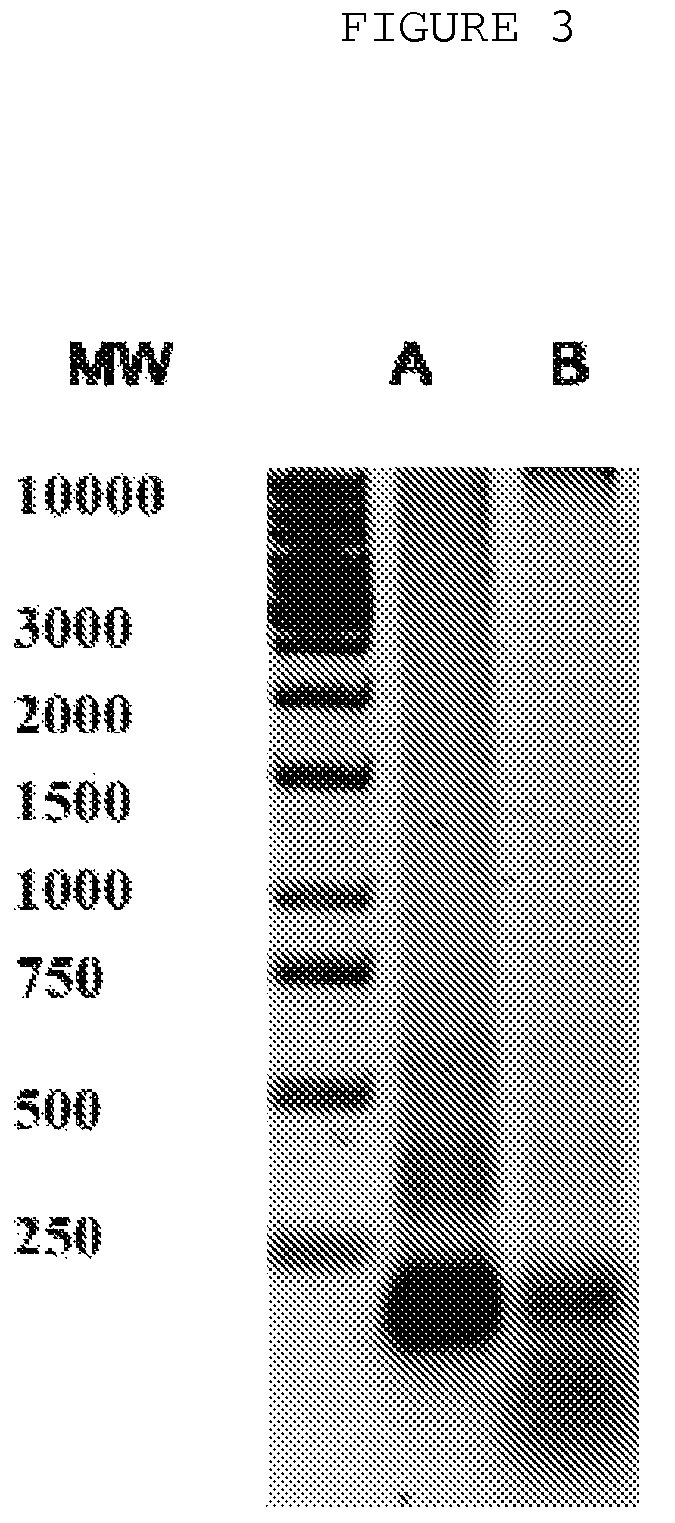Method for treating systemic bacterial, fungal and protozoan infection
a systemic bacterial, fungal and protozoan infection technology, applied in the field of medical treatment of diseases, can solve the problems of not being able to justify widespread use, not having enough clinical efficacy, and no therapeutic method developed to efficiently target extracellular blood dna in systemic bacterial, fungi or protozoa infection
- Summary
- Abstract
- Description
- Claims
- Application Information
AI Technical Summary
Benefits of technology
Problems solved by technology
Method used
Image
Examples
example 1
SEQUENCING of Extracellular Blood DNA from the Patient Suffering From Bacillary Dysentery, Shiqelosis Caused by Shiqella Flexneri
[0031]The probes of patient's extracellular blood DNA were taken before initiation of antibacterial chemotherapy and week after completion of the therapy. The extracellular DNA was cloned by the method which allows to get non amplified plasmid libraries of blood extracellular DNA with representativeness up to one million of clones with the average size of 300-500 base pairs. The DNA which has been isolated using the protocol specified above was treated with Proteinase K (Sigma) at 65° C. and subjected to additional phenol-chloroform extraction step with further overnight precipitation by ethanol. The DNA fraction was than treated by Eco RI restrictase or by Pfu polymerase (Stratagene) in presence of 300 mkM of all desoxynucleotidetriphosphates for sticky-ends elimination. The completed DNA was phosphorylated by polynucleotidkinase T4 and ligated to pBluesc...
example 2
Extracellular Blood DNA Promotes Pathogenic Behavior of Microorganism
[0034]The extracellular blood plasma DNA were obtained as follows: S. aureus VT38 and Escherichia coli K1 was injected intravenously at LD50 dose to 10 SHR mice (5 mice for each pathogen) to induce sepsis. On day 3 the diseased mice were sacrificed and extrcellular blood DNA were collected as specified above.
[0035]Biofilm formation assay was performed as follows: Escherichia coli K1 and Staphylococcus aureus VT38 pathogenic strains were grown at 37° C., and liquid cultures were incubated without shaking. Before use in biofilm formation assay, cells were harvested and washed twice with 0.15M isotonic phosphate-buffered saline (pH7.2), and the cell suspensions were standardized to an optical density (OD) of 0.8 at 520 nm. The inoculums containing 7.53+0.22 log10CFU / mL, was added to the wells of 96-well plates (200 mkL / well) and plates were incubated for 24 hours at 37° C. Different amounts of extracellular blood plas...
example 3
Extracellular Blood DNA Promotes Spread of Antibiotic Resistance and Clonogenic Potential of Microorganisms
[0039]The extracellular blood plasma DNA were obtained as follows: Escherichia coil K1 was injected intravenously at LD50 dose to 10 SHR mice to induce sepsis. On day 3 animals were treated with subtherapeutic doses of ampicillin and kanamycin for 3 consecutive days. On day 6 the diseased mice were sacrificed and extrcellular blood DNA were collected as specified above. Biofilms of E. coli ATCC 25922 were grown as described in example 2 with or without extracellular blood DNA from E. coli K1 infected animals treated with antibiotics (50 mkg / well) on selection media containing ampicillin or kanamycin or both.
[0040]Colony-forming assay was performed as follows: The term “the number of CFU” means the number of viable bacteria that grow on nutrient media in the current conditions. Biofilms were grown in 96-well plates for 24 or 48 h. at 37° C. Liquid medium with bacteria was aspira...
PUM
| Property | Measurement | Unit |
|---|---|---|
| pH | aaaaa | aaaaa |
| pH | aaaaa | aaaaa |
| volume | aaaaa | aaaaa |
Abstract
Description
Claims
Application Information
 Login to View More
Login to View More - R&D
- Intellectual Property
- Life Sciences
- Materials
- Tech Scout
- Unparalleled Data Quality
- Higher Quality Content
- 60% Fewer Hallucinations
Browse by: Latest US Patents, China's latest patents, Technical Efficacy Thesaurus, Application Domain, Technology Topic, Popular Technical Reports.
© 2025 PatSnap. All rights reserved.Legal|Privacy policy|Modern Slavery Act Transparency Statement|Sitemap|About US| Contact US: help@patsnap.com



